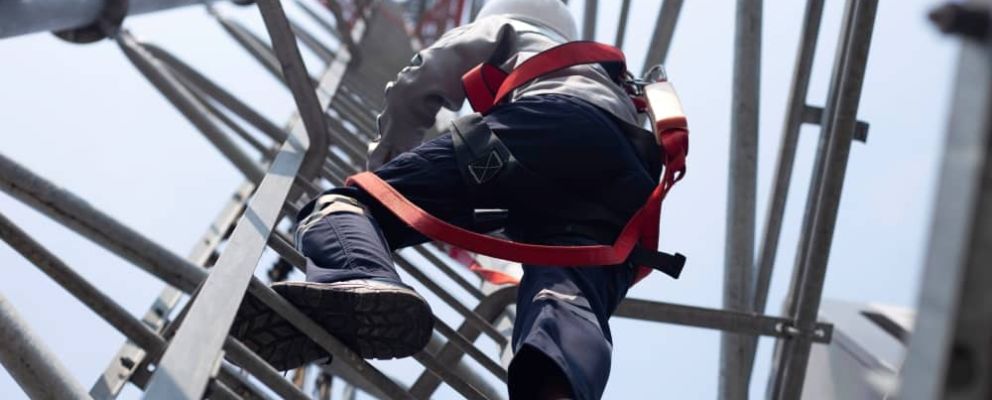By definition, the lone worker performs their job duties away from colleagues or supervisors for a significant amount of time. They face a great risk of harm, specifically because no one is around to help if something goes awry.
That’s why a lone worker must be alert and aware of certain dangers, which often include:
- Accidents
- Fire
- Lack of first aid assistance
- Sudden illness
- Violence from members of the public
- Vehicle breakdowns
- Other emergencies
Organizations should implement a safety management program that systematically addresses risks. Here are five risk assessment tips to help protect the well-being of your lone workers and ensure their health and safety:
1. Identify and Understand the Hazards Lone Workers May Encounter
Lone workers face a variety of risks daily. Whether they are operating in a food kiosk, warehouse, utility substation, or wastewater treatment plant, the hazards are everywhere. But what exactly is a hazard? It’s anything that can physically cause harm to the lone workers on your team, such as:
- Electrical units
- Chemicals
- Work with the potential of falling or slipping
- Natural hazards, including earthquakes and storms
- Icy roads
- Low visibility when driving
- Heavy machinery-related accidents
Ask yourself how those hazards could injure or put the workers in harm’s way. Think critically about the potential severity of the mishap. If possible, check any previous logs of workplace injuries. That’s where you can learn from mistakes.
2. Assess the Risk of the Hazards You Have Identified
What is the likelihood of a lone worker falling or tripping down the stairs? Do the lone workers you employ handle dangerous chemicals? Consider factors, including the probability of each hazard’s occurrence and the gravity of consequences should a lone worker encounter a threat.
Another thing is that some lone workers only work in one environment for a particular job. Others may travel to several sites on an unfixed basis. It may be unrealistic and impractical to visit all those sites, but here are ways that let you make a lone worker safety risk assessment:
- Talk to your lone workers to get their feedback on the identified risks.
- Refer to past incidents and identify the causes. Make sure to include near-misses in your evaluation, as well.
- Review worker exposure to vehicle breakdowns and collisions.
- Ensure that lone workers have an accessible entrance and exit in their work areas.
Assessing the risks also includes determining the availability and suitability of stopping (or at least minimizing) the risks. The process can be costly, so it is critical to decide whether eliminating specific hazards is proportionate to the cost.
3. Involve Key Stakeholders in Your Lone Worker Safety Risk Assessment
Communication with the lone workers is paramount, so involving stakeholders like the lone workers makes a lot of sense in assessing risks. After all, they work with the hazards themselves and therefore have a good understanding of their work environment and its risks.
Aside from getting your employees’ input, it is also necessary to involve managers, supervisors, OHS committees, and government organisations, where possible. These key personnel can help you identify risks, especially those you may have missed and determine their exact nature.
When identifying and controlling hazards, it’s crucial to determine the roles of the different parties you choose to involve. Stakeholders have varied roles within the enterprise and will likely provide a different perception of each risk. That’s why communication is essential. Remember that it is a two-way process, so be sure to encourage a culture where stakeholders and health and safety representatives can communicate freely and openly.
4. Conduct Regular Audits
You can now create a safety management program based on the results of your lone worker safety risk assessment. Be sure to track the program’s progress and perform audits regularly. Annual checks can help you determine the efficacy of the procedures.
Audits can be done by a qualified employee who isn’t a lone worker. That way, they can objectively approach this task. It also helps to interview at least 50% of your lone workers to see if they are satisfied with your safety program.
Regular audits are essential. No workplace will ever stay the same. Working environment changes will almost always create new hazards, which means you should update your safety procedures.
Don’t forget to document your findings whilst following your industry’s best practices in protecting the workforce. With the data you have gathered, you can make intelligent decisions that can further improve the safety and well-being of your lone workers.
5. Control Risks with a Data-Driven Safety Management Program
The purpose of a lone worker safety risk assessment is to design and implement a safety management program to mitigate the risks. The program can include a variety of suggestions, steps, and procedures, such as:
- Devising methods to iron out potential lone work hazards, especially those that have a high risk of severe injuries
- Training lone workers so they can conduct their hazard analyses before initiating a task
- Replacing toxic chemicals with less hazardous materials where possible
- Creating a preventative and predictive maintenance procedure for certain machinery
- Providing personal protective equipment
- Having a plan for emergency response
Above all, it is significant to monitor lone workers. This task involves keeping tabs on their whereabouts and requiring automatic check-ins whilst they are isolated. GPS tracking for real-time location monitoring is an absolute must in almost all industries with lone workers. Duress devices are also essential to allow lone workers to get access to help in emergencies as quickly and discreetly as possible.
The employer is responsible for setting up regular communication intervals beforehand, which can be done by using two-way radios, wearable technologies, or apps. These practices will help establish a routine and make identifying issues easier for lone workers.
We hope the above risk assessment tips can help you successfully conduct your lone worker safety evaluation. Focus on continuous improvement, and pay attention to industry changes, as well as regulatory and interpersonal modifications that may influence safety outcomes. Finally, choose the right safety management devices and products to bolster your proactive approach to lone worker safety.





